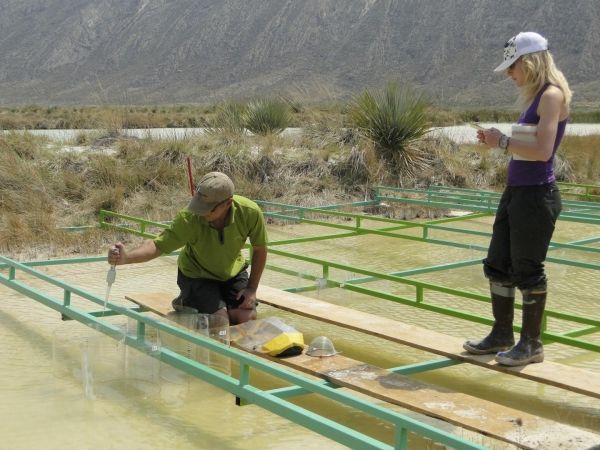The Cuatro Ciénegas Basin, in the Chihuahuan Desert in Mexico, was once a shallow sea that became isolated from the Gulf of Mexico around 43 million years ago.
This basin has an unusual characteristic of being particularly nutrient-poor and harboring a “lost world” of many below-ground and above-ground aquatic microbes of ancient marine ancestry.
Because of these characteristics, it is an invaluable place for researchers to study and understand how life may have existed on other planets in our solar system.
In a recent study published in the journal eLIFE, a team of researchers — including lead author Jordan Okie of Arizona State University’s School of Earth and Space Exploration and senior author Jim Elser of the School of Life Sciences — conducted experiments in the Cuatro Ciénegas Basin.
Read more at Arizona State University
Image: Researcher Jim Elser and research technician Laura Steger taking samples of water for chemical analysis. (Credit: Elser Lab/ASU)


